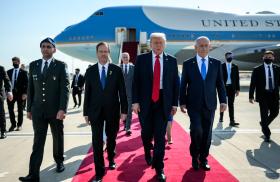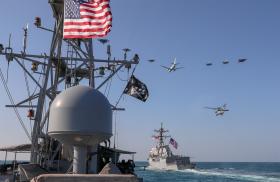

A letter to the editors of the Economist regarding how close Tehran has come to achieving nuclear breakout capability.
We noted the letter (June 29th) from Sir Richard Dalton in response to your leader on Iran. We were concerned by this passage: "You did not mention that Iran has a policy of converting its 20% enriched uranium into oxide, ready for research-reactor fuel-making. This puts the material beyond use for bombs (short of a time-consuming, detectable and technically demanding process to turn it back into gas, which can be discounted in the medium term)."
First, your briefing on Iran's nuclear capabilities ("Breakout beckons", June 22nd) did mention the conversion of 20% enriched uranium into oxide. And second, the notion that this puts the material "beyond use for bombs" is simply wrong. The conversion of oxide back to uranium hexafluoride (UF6) gas is not "time-consuming", is not necessarily "detectable", and is not particularly "technically demanding".
What both your briefing and Sir Richard failed to point out is that Iran's conversion of some of its 20% UF6 gas into a solid oxide form does little to allay fears that it is well on the path to getting nuclear weapons. Although some oxide has been made into fuel plates (not "rods", as you put it) for a research reactor, the rest of the oxide stockpile can be converted back into UF6 feedstock for centrifuges within a couple of weeks.
A few other points about your briefing. You used a term, "medium-enriched uranium", that has no scientific meaning and creates a false impression that Iran is at some sort of midpoint in the enrichment process. You talk of "20% or medium-enriched uranium". Yet the International Atomic Energy Agency defines uranium containing 20% or more of the fissile isotope U-235 as highly enriched.
Not only is Iran close to a breakout capability on weapons but the huge growth in its installed centrifuge capacity means that we will need to be as worried by its large stock of 5% enriched UF6 gas as we are by its current 20% holdings.
You concluded that: "What nobody knows, quite possibly not even the supreme leader himself, is when and how Iran will step across the nuclear threshold." Arguably, save testing a device and mastering a delivery system, it has already done so.
Simon Henderson is the Baker fellow and director of the Gulf and Energy Policy Program at The Washington Institute. Olli Heinonen is a senior fellow at the Harvard Kennedy School's Belfer Center and a former deputy director-general for safeguards at the IAEA. They are the authors of Nuclear Iran: A Glossary of Terms, copublished in 2012 by The Washington Institute and the Belfer Center.
The Economist



